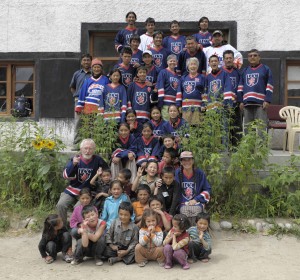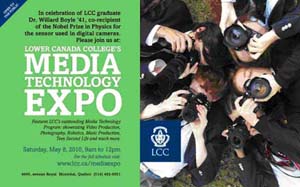Every January I struggle with the change of year—and in a very practical way. It takes me a while to adapt to the change from the previous year. I have already made a lot of mistakes and wasted a lot of cheques and have written “2009” on several notepads and documents wherever I needed the date. This year has been especially difficult for me as we have not simply jumped another digit, but moved to 2010—the end of the decade.
 End of decades bring on some curious developments. Think about it, music is constantly referred to by the decade. There are entire stations on satellite and local radio dedicated to 60s, 70s, 80s, and 90s classics. Social trends are also attributed to specific decades. We like to classify things this way; hippies and the rise of feminism during the 60s is a perfect example of this tendency. A decade reflects a neat and tidy period, and analysts like to compartmentalize specific trends, developments and orientations.
End of decades bring on some curious developments. Think about it, music is constantly referred to by the decade. There are entire stations on satellite and local radio dedicated to 60s, 70s, 80s, and 90s classics. Social trends are also attributed to specific decades. We like to classify things this way; hippies and the rise of feminism during the 60s is a perfect example of this tendency. A decade reflects a neat and tidy period, and analysts like to compartmentalize specific trends, developments and orientations.
 This past weekend I read about a conference of language experts in the USA who gathered to determine the most important new words from the past decade. The sponsoring organization is called the American Dialect Society and is composed of leading linguists, writers and independent scholars. Yes, language does evolve and change. In fact through teenagers’ current addiction to texting at an extraordinary rate, young people are actually influencing the English language more dramatically and more rapidly than at any time in history, especially when it comes to the use of new abbreviations for words.
This past weekend I read about a conference of language experts in the USA who gathered to determine the most important new words from the past decade. The sponsoring organization is called the American Dialect Society and is composed of leading linguists, writers and independent scholars. Yes, language does evolve and change. In fact through teenagers’ current addiction to texting at an extraordinary rate, young people are actually influencing the English language more dramatically and more rapidly than at any time in history, especially when it comes to the use of new abbreviations for words.
Consider for a moment the conference on new words. Can you think of what some of the most popular new words were from the past ten years that crept into common use? Finalists included words we have all incorporated into our vocabularies, but actually didn’t exist a decade ago. They include: “green” – in terms of the green movement for protecting our environment and the greening of buildings, institutions and companies. The terms “9/11” and “War on Terror” became common after the attacks on the twin towers in New York in 2001. Two others referred to popular activities driven by technology: to “blog,” and to “text.” Amazingly, no one did it only a decade ago, so those words were finalists. The big winner was the verb “To google”……with millions of searches on that particular search engine reflecting the biggest societal change from a decade ago.
So America’s foremost language experts have reminded us that three main developments in the past decade are particularly notable: (1) the growth of the environmental movement; (2) the aftermath of 9/11 and the birth of a new extremism (especially since the end of the Cold War between the USA & the USSR); and (3) the impact of rapidly-changing technology in the information age.
To google is to find answers almost instantly on virtually any topic. It’s fantastic, really, but I offer two warnings. Is googling making us lazy and impatient? In many ways I think so. We are so used to instant responses to our searches, what’s the impact on the other areas of our lives where the answers aren’t as instant, where we need to invest time, be thoughtful and show patience. I think the rush is a problem and we need to admit it and take steps to counter what could be the decade of impatience in the next ten years. Second, don’t be duped by the first answers you receive when you search online. The best information may be layers below the top pages of a Google search – those that rise to the top often pay for that privilege. It’s how Google makes such an obscene profit every year. It may not always be the best information for your purposes.
So what will be the new words that define new trends and developments a decade from today? If neither you nor I are here, just text me to offer your selections….. if text still exists. I doubt it will. Ten years from now it will probably be seen as ancient technology —so passé, so yesterday! —Christopher Shannon, Headmaster




 End of decades bring on some curious developments. Think about it, music is constantly referred to by the decade. There are entire stations on satellite and local radio dedicated to 60s, 70s, 80s, and 90s classics. Social trends are also attributed to specific decades. We like to classify things this way; hippies and the rise of feminism during the 60s is a perfect example of this tendency. A decade reflects a neat and tidy period, and analysts like to compartmentalize specific trends, developments and orientations.
End of decades bring on some curious developments. Think about it, music is constantly referred to by the decade. There are entire stations on satellite and local radio dedicated to 60s, 70s, 80s, and 90s classics. Social trends are also attributed to specific decades. We like to classify things this way; hippies and the rise of feminism during the 60s is a perfect example of this tendency. A decade reflects a neat and tidy period, and analysts like to compartmentalize specific trends, developments and orientations. This past weekend I read about a conference of language experts in the USA who gathered to determine the most important new words from the past decade. The sponsoring organization is called the American Dialect Society and is composed of leading linguists, writers and independent scholars. Yes, language does evolve and change. In fact through teenagers’ current addiction to texting at an extraordinary rate, young people are actually influencing the English language more dramatically and more rapidly than at any time in history, especially when it comes to the use of new abbreviations for words.
This past weekend I read about a conference of language experts in the USA who gathered to determine the most important new words from the past decade. The sponsoring organization is called the American Dialect Society and is composed of leading linguists, writers and independent scholars. Yes, language does evolve and change. In fact through teenagers’ current addiction to texting at an extraordinary rate, young people are actually influencing the English language more dramatically and more rapidly than at any time in history, especially when it comes to the use of new abbreviations for words.